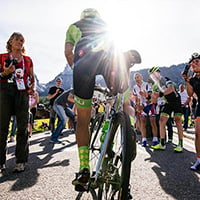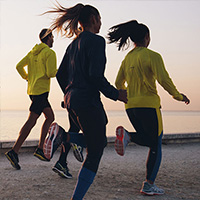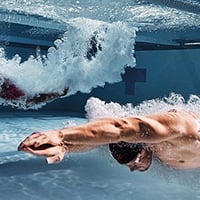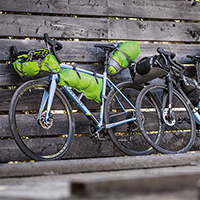CHILDREN'S BIKE GUIDE
Topic overview
Children's bikes frame size
How do I determine the correct frame size?
Children's bikes are classified according to the wheel size (in inches).
Children's bikes are aimed at children between the ages of 3-6 and have wheel sizes between 12 and 18 inches. These bikes usually aren't legally fit for the road, but this is not necessary, since they are used primarily on pavements and off the road. For larger children (wheels with sizes from 20 inches) there are different models. These bikes are legally fit for the road.
To determine the suitable frame size, the following table serves as a guide
| Body height | Wheel size in inches |
| 90 – 105 cm | 12” – 14” |
| 100 – 115 cm | 16” |
| 110 – 125 cm | 18” |
| 120 – 130 cm | 20” |
| 130 – 145 cm | 24” |
Note: A child should not grow "into the bike". A child's bike should fit the child and have an adjustable seatpost or adjustable handlebars. If a child is 3-4 cm taller than the next bike size up, a larger bike can already be used if the child is a confident rider.
Tips
What about stabilisers?
Small bikes are usually delivered with stabilisers, which can then be mounted as optional equipment. It is generally recommended to learn cycling without support wheels so that children can learn the correct way to cycle and not pick up bad haits.
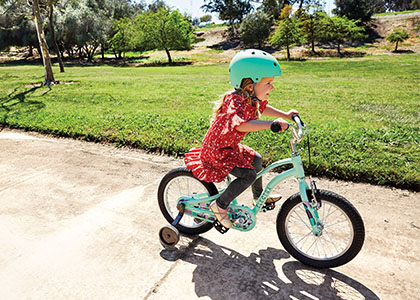
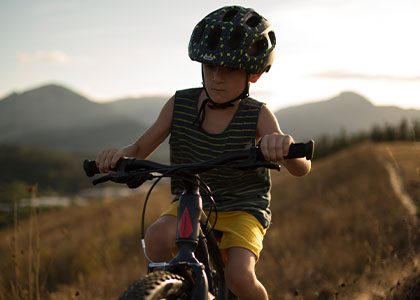
How should the child sit on the bike?
When the child sit in the saddle, it is important that their feet can touch the ground. While cycling, the legs should not be fully stretched when the pedal is pushed, but slightly bent, like the arms. Children should be able to grab the handlebar without effort. In addition, the seating position should be relatively upright so that the children can view their surroundings well.
Safety
Helmets
Children should always wear helmets when cycling. Children are more likely to wear helmets that feature cool and stylish designs. To determine where the helmet fits, follow these tips:
- The helmet should sit well and cover both the forehead and the back of the head. Ideally, the helmet sits two fingers over the eyebrows.
- The helmet should not be too tight and the head should be able to breathe under the helmet. The helmet should not leave any imprint on the skin.
- The strap should hold the helmet well, but not too tight. Again, one or two fingers should fit between the chin and the strap.
If the child should crash and land on the helmet, the helmet must be replaced. After a fall, the helmet has fulfilled its task, since a fall often damages the material in places that are not visible. Fine cracks already do enough damage to the structure and strength of the bicycle helmet.
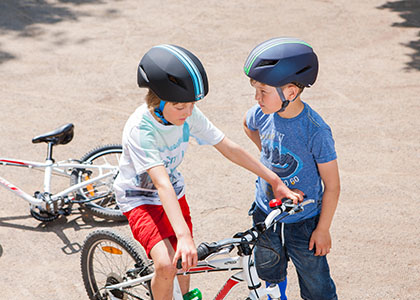
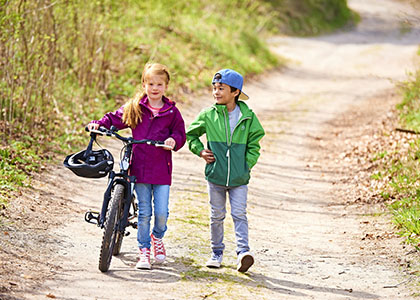
Lights, reflectors & clothing
Street registrations and lights: As a rule, children's bikes of 12-18 inches are supplied without lighting, since they are only intended for use on pavements. We also advise you to equip the child's clothing with reflectors to ensure better visibility.
Bikes over 20 inches in size meet the legal requirements for road cycling and include lights, reflectors and cat eyes.






























